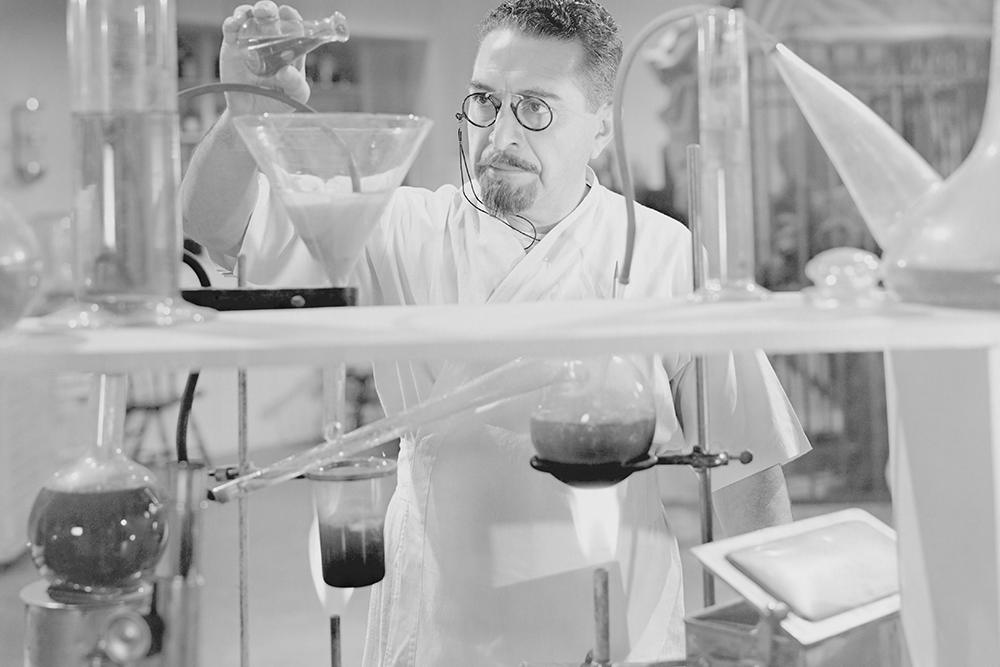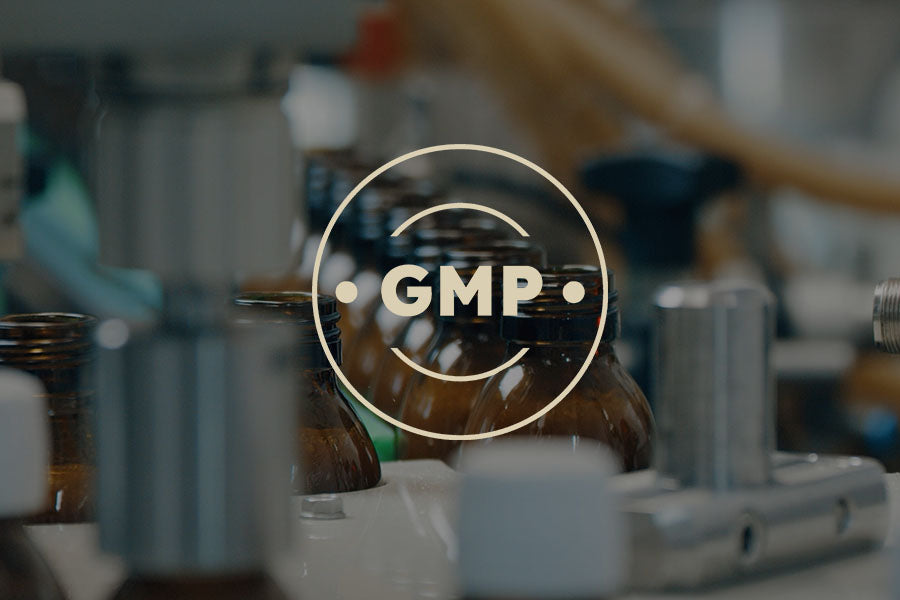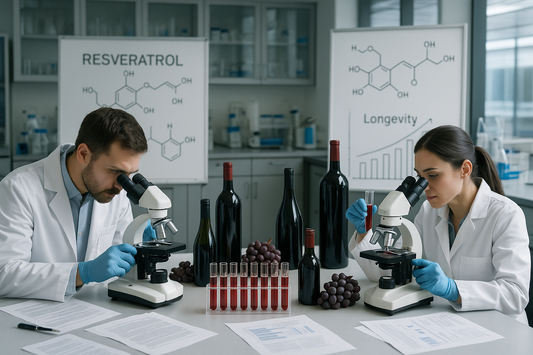
The history of NMN
In the quest for rejuvenation and health promotion, NMN (Nicotinamide Mononucleotide) has garnered a lot of attention in recent years. NMN is a popular research tool due to its great potential, such as increasing NAD+ values in the body. This article delves into the intriguing history of NMN, from its discovery to the recent scientific breakthroughs that underscore its potential for the future of anti-aging and metabolic health.
The discovery of NMN

NMN was discovered in the 1960s during research on the co-enzyme NAD+ (Nicotinamide Adenine Dinucleotide). This is a molecule responsible for the biochemical processes of cellular energy production. Scientists have identified NMN as an intermediate in the biosynthesis of NAD+, an essential molecule for metabolic functions and energy management in cells.
NAD+ was first identified in 1906 by British biochemists Arthur Harden and William John Young. Initially, the researchers were not looking for the coenzyme NAD+; the research was actually intended to study fermentation. Fermentation is a process in which bacteria, fungi, and yeasts break down biological materials into simpler substances. This discovery of the coenzyme NAD+ led to a surge of research that resulted in a better understanding of coenzymes.
Research on NMN
After the worldwide interest in the newly discovered NAD+, a lot of research has been done on the biochemical pathways and precursors involved in the synthesis of NAD+. During these studies, precursors of NAD+ were identified. Further research identified the various biochemical pathways and precursors of NAD+, including NMN. Following this research, NMN was found to be an important intermediate step in the biosynthesis of NAD+.
Research the interest in NMN received a significant boost in the 2000s, when scientists discovered the role of NMN in increasing NAD+ levels and its connection to aging and metabolic diseases. Especially the potential to influence aging processes led to extensive studies on the potential benefits of NMN supplementation. Thanks to contemporary interest and research, NMN has undergone major developments.
Important commercial milestones for NMN powder
The commercial milestones for NMN began in the early 2010s, but the first NMN supplements hit the market in 2016 and quickly became popular due to their purported anti-aging effects. Since then, there have been significant investments and innovations in the NMN industry, with a growing number of companies offering products aimed at improving health and longevity.
- In 2016, the first commercial NMN supplements were sold. This made it accessible for the first time to consumers interested in the potential health benefits.
- In 2019, the first clinical trials were conducted. These clinical trials marked the beginning of a revolution in the way people viewed this molecule.
- These studies are aimed at evaluating the safety and effects of NMN supplements on various health parameters.
- In 2020, the clinical results from the first clinical trials published. The initial results indicate that NMN supplementation is safe and can offer potential health benefits. These range from improved insulin sensitivity to increased NAD+ levels.
- In 2021, further commercial expansion takes place in response to the positive clinical results. Further clinical studies confirm the safety and effectiveness of NMN. This leads to a significant increase in the availability and popularity of NMN supplements on the market.
- To date, clinical studies are being conducted to further investigate the functioning and effects of NMN during daily use.
Pioneers and discoverers of NMN
The leading pioneers in NMN research have played a crucial role in discovering the role of this molecule in cellular energy and aging. Researchers like David Sinclair and Shin-ichiro Imai have done groundbreaking work by investigating the relationship between NMN and NAD+, which led to new insights into the mechanisms of aging and potential therapeutic applications of NMN. But researchers from the 20th century also did excellent work for the development of NMN. Their contributions have greatly deepened the scientific understanding of NMN and paved the way for further research and commercial development.
Arthur Harden and Hans von Euler-Chelpin
Arthur Harden and Hans von Euler-Chelpin made a significant contribution to the development of NMN. Arthur Harden and Hans Von Euler-Chelpin laid the foundation for understanding co-enzymes in cellular processes with their research. They made a fundamental contribution to early biochemistry that laid the groundwork for the development of NMN, although they did not directly study NMN itself. In the 1920s, they received the Nobel Prize in Chemistry for their research on fermentation processes and the role of co-enzymes such as NAD+ (Nicotinamide Adenine Dinucleotide). Their work in the field of enzymes and co-enzymes later helped scientists understand how NMN, as a precursor to NAD+, is involved in cellular energy production and metabolic processes. This research laid the foundation for the later discovery of the role of NMN in increasing NAD+ levels and its potential benefits for health and aging.
Otto Warburg
Otto Warburg was a German biochemist who made significant contributions to understanding the role of NAD+ in cellular respiration. Otto Warburg's research contributed to the fundamental knowledge important for understanding NMN's role in cellular processes. Warburg received the Nobel Prize in Physiology or Medicine in 1931 for his discoveries about respiratory enzymes and the role of oxygen in cellular energy production. His work on energy production in cells and the role of enzymes and co-enzymes in metabolism laid the foundation for further research into NAD+ and its precursors such as NMN. By understanding the basic principles of cellular respiration and metabolism, Warburg contributed to the broader scientific framework within which the importance of NMN and NAD+ could be discovered and studied.
Conrad Elvehjem
Conrad Elvehjem was an American biochemist who made significant contributions to the knowledge of nucleotides and their role in biochemical reactions. Elvehjem played an important role in the development of our understanding of NMN through his research on vitamin B3 and the biochemical processes associated with it. In the 1930s and 1940s, Elvehjem conducted crucial studies on the role of vitamin B3, which later became known as niacin (or vitamin B3), in the human body. Conrad Elvehjem specifically researched identifying niacin as an essential vitamin. His research led to the discovery of the role of niacin in the formation of NAD+ (nicotinamide adenine dinucleotide).
Elvehjem’s findings on niacin and NAD+ laid the foundation for further research into the biochemical pathways of NAD+ and its precursors, including NMN. He contributed to understanding how NAD+ is formed from its precursors and the role of these processes in cellular energy production. Although Elvehjem did not directly study NMN, his pioneering work in understanding niacin and NAD+ provided important insights that paved the way for later research into NMN and its role in increasing NAD+ levels and promoting health.
Shin-ichiro Imai
Shin-ichiro Imai has done excellent work in the field of NMN development. He investigated how NMN can counteract aging and improve metabolism. With a focus on NMN, Shin-ichiro Imai identified NMN in the early 2000s as an important precursor for NAD+ which is crucial for energy production and cell health. His research showed that supplementing with NMN can increase NAD+ levels, which may potentially slow down aging effects and improve metabolic health. This work has positively contributed to the development of NMN as a supplement that can combat aging and age-related conditions.
David Sinclair
David Sinclair demonstrated through his extensive studies at Harvard Medical School that supplementation with NMN can help increase NAD+ levels, which may contribute to slowing down aging processes and improving metabolic health. Sinclair's contributions have not only broadened the scientific basis for NMN but also helped in translating this knowledge into practical applications and supplements, making NMN an important topic in the discussion about aging and health.










